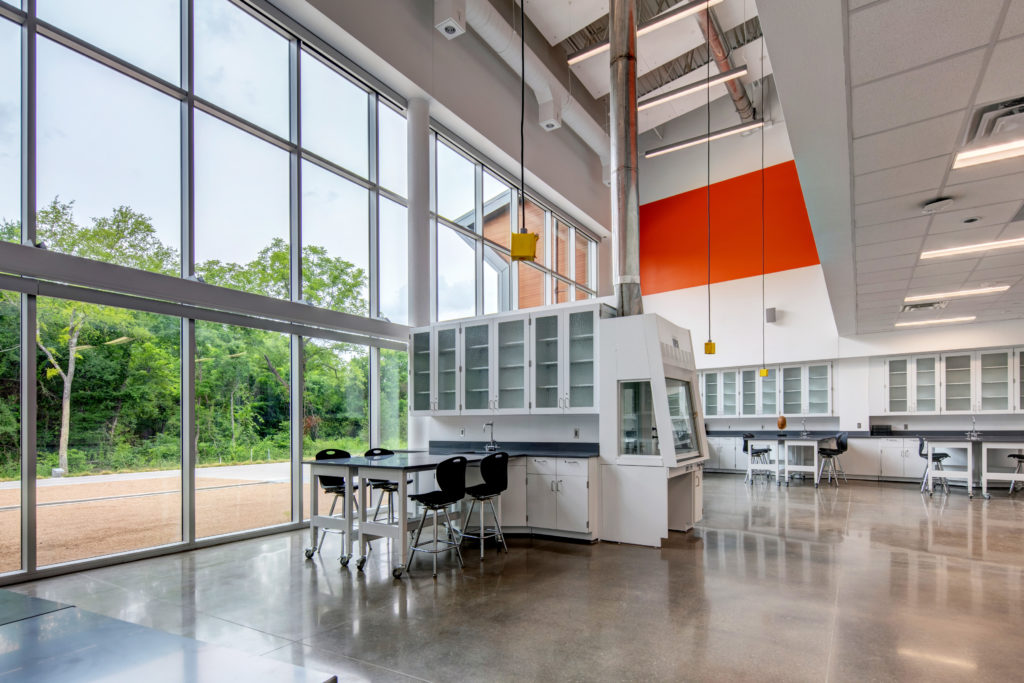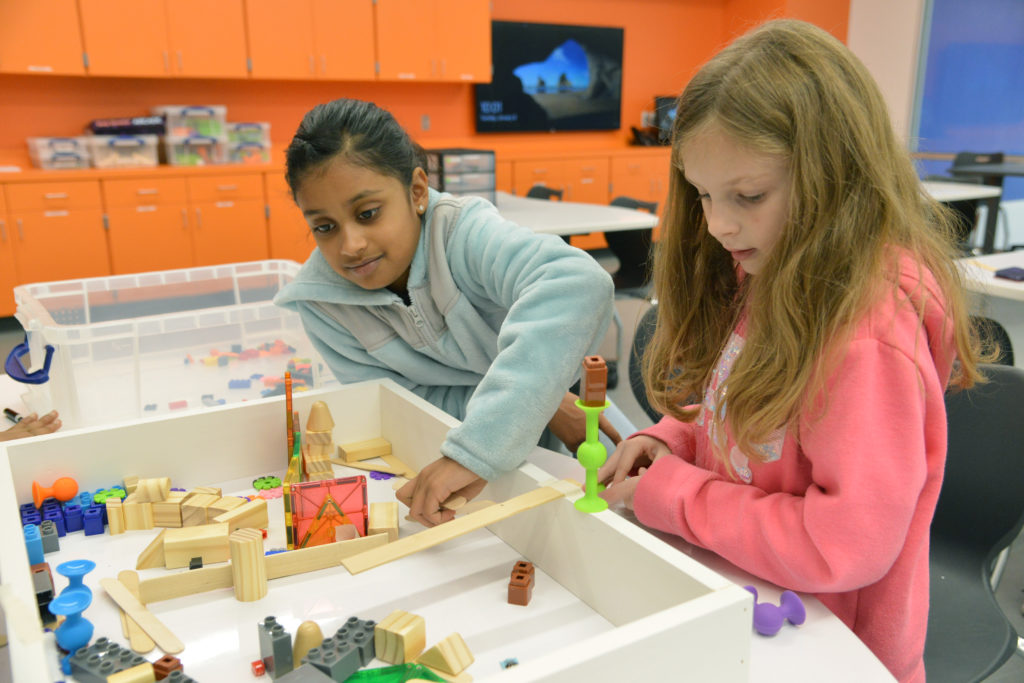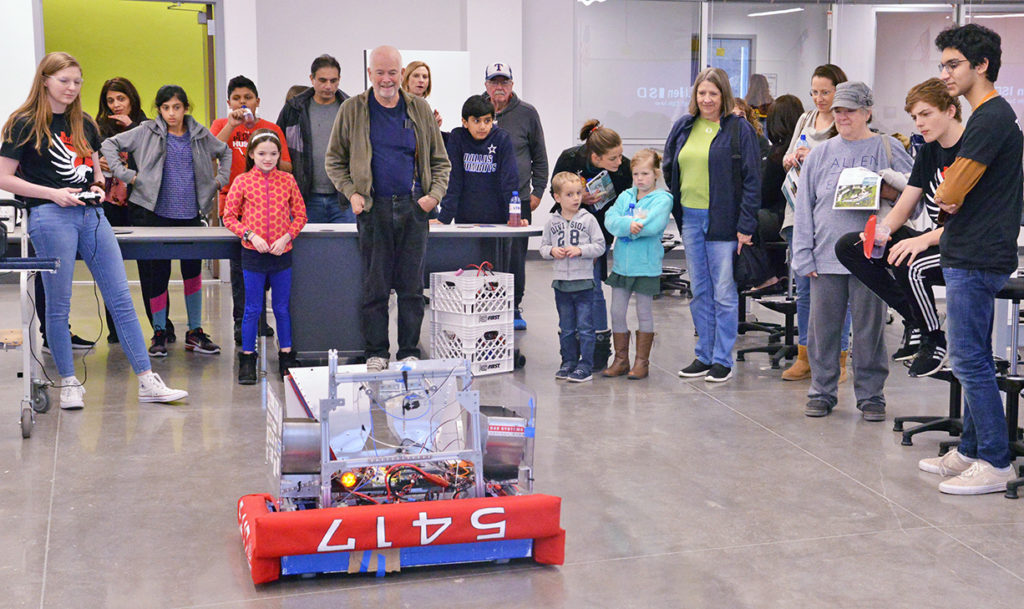For students to experience and achieve deep learning, they must have opportunities to understand and attach meaning to new content (Wilson Smith & Colby, 2007). Experiences essential for deep learning require purposeful planning, and teachers with the capacity to engage in conversation and connect with colleagues to design lessons that promote student agency (Wilson Smith et al., 2007). Teachers must possess the capacity, resources, and space to facilitate opportunities that result in deep learning. Teachers at a new Science, Technology, Engineering, Arts, and Mathematics (STEAM) center in the south-central United States work in intentionally designed spaces. Through a mixed-methods study, the teachers’ self-efficacy was surveyed; subsequently, through individual interviews, researchers explored the teachers’ perceptions of changes in their efficacy upon moving to the center. The authors report on the changes in the teachers’ self-efficacy found statistically significant and the themes that emerged.

Teacher efficacy has a significant positive impact on student achievement (Bandura, 1993; Tschannen-Moran & Barr, 2004). Collective teacher efficacy is the impact teachers have on students beyond the impact home life and communities have on student learning (Tschannen-Moran et al., 2004). At the school where this study was conducted, the campus administrator was committed to building collective capacity by facilitating teacher collaboration. The administrator’s efforts aligned with studies that have shown a positive work environment have a positive impact on teachers’ efficacy, and in teaching and learning where teachers work collaboratively (Tschannen-Moran et al., 2004). Teachers who facilitate learning opportunities where students are actively engaged and self-regulate their behavior promote student agency and increased students’ sense of efficacy (Oliveras-Ortiz, Bouillion, & Asbury, 2020; Williams, 2017).
An Intentionally-Designed STEAM Center
The school where this study was conducted was purposefully selected as the research site for multiple reasons: (1) the building’s curricular focused on STEAM content and the rigor intrinsically required in these courses, (2) the fact that teachers were not selected to move from the comprehensive high school to the STEAM school, but rather the subject areas were chosen to be taught in the new school, which automatically resulted in the transfer of the teachers to the new building, (3) the designing architects’ desire to explore the use of the spaces as intended, and (4) for the award-winning design of the building where the center is housed. The STEAM school provided the researchers with a unique opportunity to explore issues of teacher efficacy in newly designed learning spaces.

A case study was conducted using an explanatory sequential mixed methods approach (Creswell, 2014) to facilitate the deep study of the perceptions of self-efficacy. An explanatory sequential mixed methods study begins with the quantitative data collection and analysis, followed by the qualitative data collection and analysis to facilitate the interpretation of the quantitative data, and identify convergence or divergence between the different sources of information (Creswell, 2014). The instruments were developed as the research evolved, in alignment with one of the three models of mixed methods research (Creswell, 2014), to seek additional information for clarification of the first phase of the data analysis. The survey data, including quantitative data, and the first set of qualitative data, were collected, analyzed, and subsequently used to guide the development of two qualitative interview instruments used in phases two and three of the study.
Twenty-five purposefully selected teachers (100% participation) at a new STEAM center in a large suburban district in the south-central United States completed the online survey. Subsequently, teachers volunteered to be a part of a semi-structured interview, serving as the next phase of the study. The interviews were conducted via Zoom, a video conferencing platform. Eight teachers were interviewed, three males and five females. Following the teacher interviews, an interview instrument was developed to clarify the themes that had emerged in the first two phases of the study. The last phase of data collection was the administrator’s interview, also conducted via Zoom.

Beyond Self-Efficacy: School Culture and Learning Spaces
The impetus for this study was the researchers’ interest in the impact intentionally designed spaces might have on teachers’ self-efficacy. The researchers indeed found an increased level of self-reported efficacy among teachers in the new STEAM center. Moreoever, the teachers’ perceptions for the changes in their efficacy provided an in-depth view of the factors that influenced the teachers’ sense of efficacy. The increased level of self-reported efficacy was credited to the deliberate culture of high expectations and risk-free innovation defined by the campus administrator. The expected culture was communicated as the norms once the building opened. Confidence and trust provide the catalyst to do something new. Having the freedom to make instructional decisions, that build confidence, leads to significant levels of efficacy. The survey and interview data revealed four themes.
Valuing Learning. Passion for academic content made an impact on the belief teachers had in themselves to connect their own capabilities with students’ capabilities. Teachers believed they could change students’ perceptions about academic content due to the environment, increasing the value students placed on learning. Because teachers felt comfortable, they perceived a greater opportunity to support a variety of different student learning styles, which heightened students respect for learning.

Fostering Student Creativity. Teachers in this study consistently identified the learning environment as a reason why they felt confident in both lesson design and execution. Providing materials that may be considered non-traditional helped facilitate creative student projects. Teachers reported their willingness to allow students autonomy in their thinking about expected outcomes, which also allowed for projects, demonstrations, and presentations that exceeded expectations.
Challenging Very Capable Students. Collaboration among teachers increased their perceived ability to challenge students in ways they had not. Opportunities existed where students extended their learning outside of their assigned content by also learning from other teachers. Exposing students to content and related activities increased their knowledge and allowed teachers to extend their learning opportunities outside of their own areas of expertise. The intentionally designed spaces, such as makerspace, and the extensive materials that exist in that space allowed students to explore and test their own comfort levels to produce more.
When allowed to thrive, teachers own the authority to take risks and realize the unexpected.
Culture. Teachers reported the importance and impact school culture has had on their efficacy, passion for teaching, and willingness to take risks. They felt responsible to collaborate and take risks. They reported synergy because of cross-curricular responsibilities and described the safest environment they had ever experienced when expected to fail to grow.
When allowed to thrive, teachers own the authority to take risks and realize the unexpected. The culture and the environment resulting from working together under the leadership of a trusting, encouraging administrator who possesses the ability to influence greatness have the potential to facilitate teachers’ increased self-efficacy. When given the right circumstances in both environment and leadership, the teachers in this study demonstrated the extensive possibilities for increased impact on students’ learning and success.
References
Bandura, A. (1993). Perceived self-efficacy in cognitive development and functioning. Educational Psychologist, 28, 117–148.
Creswell, J. W. (2014). Research design: Qualitative, quantitative, and mixed methods approaches (4th ed.). SAGE Publications. Kindle Edition.
Oliveras-Ortiz, Y., Bouillion, D. E., & Asbury, L. (2020). Research Paper Commissioned by VLK Architects. Teachers’ instructional decisions and student agency in new purposefully designed learning spaces. Houston, TX: VLK Architects. https://vlkarchitects.com/insights/teachers-instructional-decisions-and-student-agency-in-new-purposefully-designed-learning-spaces
Tschannen-Moran, T. & Barr, M. (2004) Fostering student learning: The relationship of collective teacher efficacy and student achievement. Leadership and Policy in Schools, 3(3), 189-209, DOI: 10.1080/15700760490503706
Williams, P. (2017). Student agency for powerful learning. Knowledge Quest, 45(4), 8-15.
Wilson Smith, T., & Colby, S. A. (2007). Teaching for deep learning. The Clearing House 80(5), 205-210.

